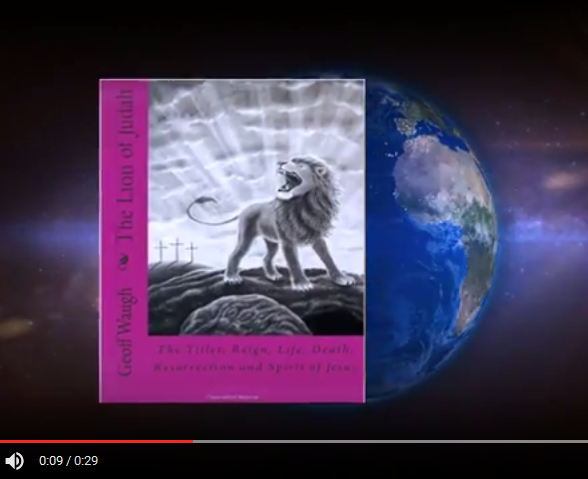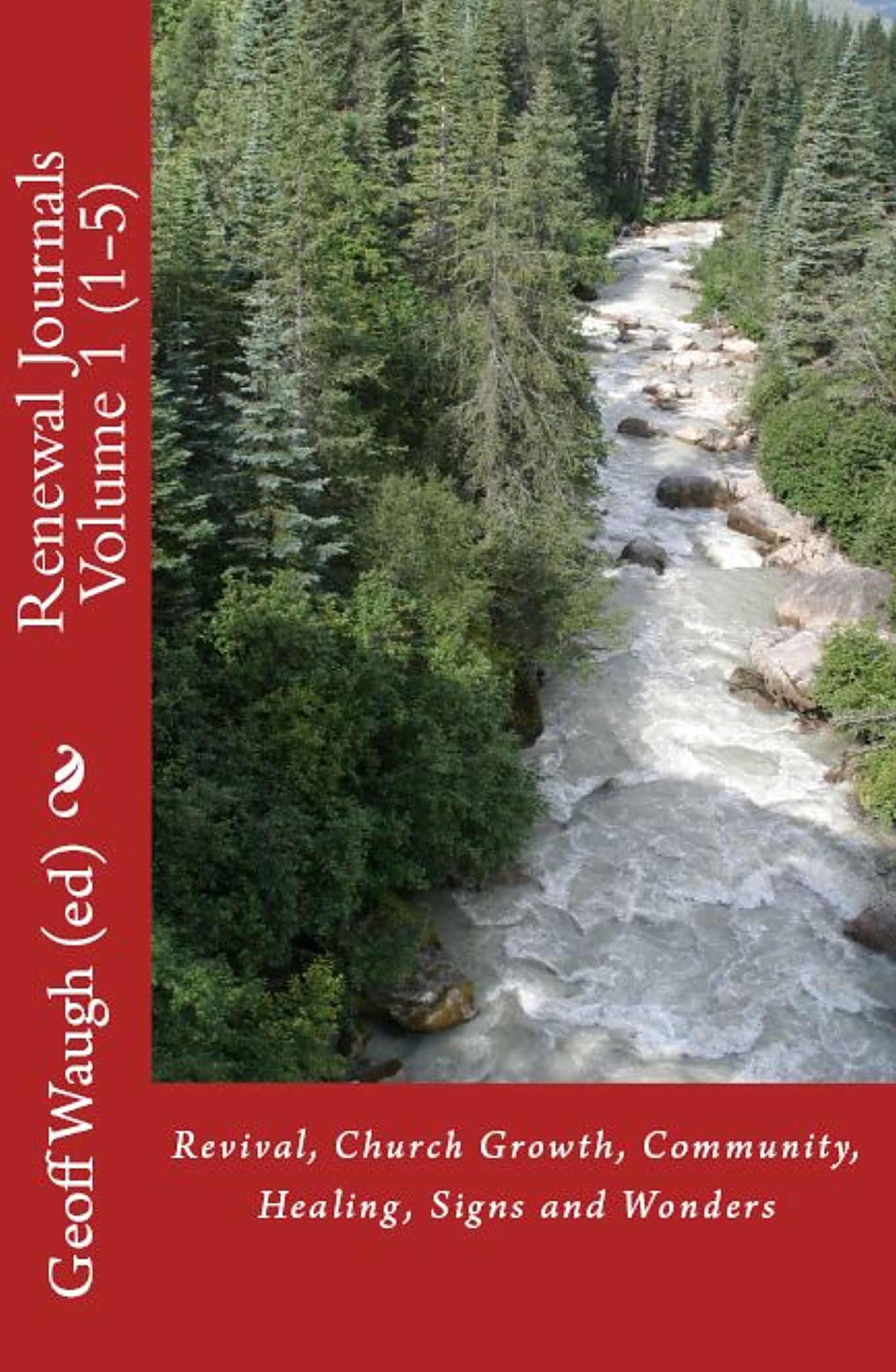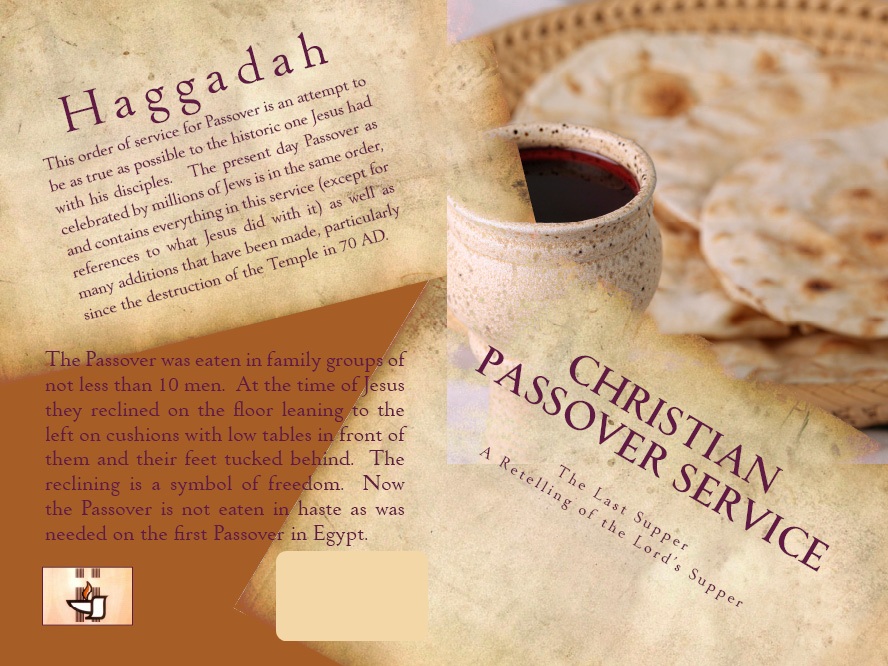
The Lion of Judah Book 4: The Death of Jesus
 The Lion of Judah – Blog
The Lion of Judah – Blog
The Lion of Judah – PDF
Selection from this book:
Testimonies – Zinznedorf, Wesleys & Whitefield, Finney, Moody, Roberts, Gondarra
Contents from all six books compiled in one book:
1 The Titles of Jesus – Blog
2 The Reign of Jesus – Blog
3 The Life of Jesus – Blog
4 The Death of Jesus – Blog
5 The Resurrection of Jesus – Blog
6 The Spirit of Jesus – Blog
Free eBooks on this page. Paperbacks in Renewal Journal Store
Permissions: You can reproduce any Renewal Journal resource, including print.
Share good news – Share this page freely
Copy and share this link on your media, eg Facebook, Instagram, Emails:
The Lion of Judah – rediscovering Jesus:
https://renewaljournal.com/2014/07/06/the-lion-of-judah/https://renewaljournal.com/2014/07/06/the-lion-of-judah/
FREE PDF books on the Main Page
Share to your Facebook, Twitter, Google & Linkedin with links below
Selection from The Lion of Judah (4) The Death of Jesus: The Tree
The Lion of Judah Series
The Lion of Judah Series – Blogs
1 The Titles of Jesus – Blog
The Titles of Jesus – PDF
2 The Reign of Jesus – Blog
The Reign of Jesus – PDF
3 The Life of Jesus – Blog
The Life of Jesus – PDF
4 The Death of Jesus – Blog
The Death of Jesus – PDF
5 The Resurrection of Jesus – Blog
The Resurrection of Jesus – PDF
6 The Spirit of Jesus – Blog
The Spirit of Jesus – PDF
7 The Lion of Judah – in one volume – Blog
The Lion of Judah – PDF
Selection from (1) The Titles of Jesus: Aslan – The Lion of Judah
Selection from (2) The Reign of Jesus: Appendix – China Miracle
Selection from (3) The Life of Jesus: Prayer, Crowds and Healing
Selection from (4) The Death of Jesus: The Tree
Selection from (5) The Resurrection of Jesus: Biblical accounts
Selection from (6) The Spirit of Jesus: Testimonies
Cover art by Rebecca Brogan – www.jtbarts.com

Jerusalem Emblem: The Lion of Judah
The Hebrew word is Jerusalem
Contents of (4) the Death of Jesus
This book surveys the significance of the death of Jesus on the cross using key verses and passages and a harmony of the Gospels, including this chart summary:
Introduction
The Old Testament foretold Jesus’ death
Jesus foretold his death
Holy Week
The Resurrection and Ascension
Reflections on Jesus’ Death and Resurrection
New Testament
Other Sources
Conclusion
Good Friday – Day of Crucifixion Mark 14:43 – 15:47 – trials and death
Jesus before the Council
They took Jesus to the high priest; and all the chief priests, the elders, and the scribes were assembled. 54 Peter had followed him at a distance, right into the courtyard of the high priest; and he was sitting with the guards, warming himself at the fire. 55 Now the chief priests and the whole council were looking for testimony against Jesus to put him to death; but they found none. 56 For many gave false testimony against him, and their testimony did not agree. 57 Some stood up and gave false testimony against him, saying, 58 ‘We heard him say, “I will destroy this temple that is made with hands, and in three days I will build another, not made with hands.”’ 59 But even on this point their testimony did not agree. 60 Then the high priest stood up before them and asked Jesus, ‘Have you no answer? What is it that they testify against you?’ 61 But he was silent and did not answer. Again the high priest asked him, ‘Are you the Messiah, the Son of the Blessed One?’ 62 Jesus said, ‘I am; and
“you will see the Son of Man
seated at the right hand of the Power”,
and “coming with the clouds of heaven.”’
63 Then the high priest tore his clothes and said, ‘Why do we still need witnesses? 64 You have heard his blasphemy! What is your decision?’ All of them condemned him as deserving death. 65 Some began to spit on him, to blindfold him, and to strike him, saying to him, ‘Prophesy!’ The guards also took him over and beat him. (Mark 14:53-65)
Jesus before Pilate
As soon as it was morning, the chief priests held a consultation with the elders and scribes and the whole council. They bound Jesus, led him away, and handed him over to Pilate. 2 Pilate asked him, ‘Are you the King of the Jews?’ He answered him, ‘You say so.’ 3 Then the chief priests accused him of many things. 4 Pilate asked him again, ‘Have you no answer? See how many charges they bring against you.’ 5 But Jesus made no further reply, so that Pilate was amazed.
(Mark 15:1-5)
Jesus before Herod
When Pilate heard this, he asked whether the man was a Galilean. 7 And when he learned that he was under Herod’s jurisdiction, he sent him off to Herod, who was himself in Jerusalem at that time. 8 When Herod saw Jesus, he was very glad, for he had been wanting to see him for a long time, because he had heard about him and was hoping to see him perform some sign. 9 He questioned him at some length, but Jesus gave him no answer. 10 The chief priests and the scribes stood by, vehemently accusing him. 11 Even Herod with his soldiers treated him with contempt and mocked him; then he put an elegant robe on him, and sent him back to Pilate. 12 That same day Herod and Pilate became friends with each other; before this they had been enemies.
(Luke 23:6-12)
Pilate Hands Jesus over to Be Crucified
Now at the festival he used to release a prisoner for them, anyone for whom they asked. 7 Now a man called Barabbas was in prison with the rebels who had committed murder during the insurrection. … 15 So Pilate, wishing to satisfy the crowd, released Barabbas for them; and after flogging Jesus, he handed him over to be crucified. (Mark 15:6-7, 15)
The Soldiers Mock Jesus
Then the soldiers led him into the courtyard of the palace (that is, the governor’s headquarters); and they called together the whole cohort. 17 And they clothed him in a purple cloak; and after twisting some thorns into a crown, they put it on him. 18 And they began saluting him, ‘Hail, King of the Jews!’ 19 They struck his head with a reed, spat upon him, and knelt down in homage to him. 20 After mocking him, they stripped him of the purple cloak and put his own clothes on him. Then they led him out to crucify him.
(Mark 15:16-20)
The Crucifixion of Jesus
They compelled a passer-by, who was coming in from the country, to carry his cross; it was Simon of Cyrene, the father of Alexander and Rufus. 22 Then they brought Jesus to the place called Golgotha (which means the place of a skull). 23 And they offered him wine mixed with myrrh; but he did not take it. 24 And they crucified him, and divided his clothes among them, casting lots to decide what each should take.
25 It was nine o’clock in the morning when they crucified him. 26 The inscription of the charge against him read, ‘The King of the Jews.’ 27 And with him they crucified two bandits, one on his right and one on his left. 29 Those who passed by derided him, shaking their heads and saying, ‘Aha! You who would destroy the temple and build it in three days, 30 save yourself, and come down from the cross!’ 31 In the same way the chief priests, along with the scribes, were also mocking him among themselves and saying, ‘He saved others; he cannot save himself. 32 Let the Messiah, the King of Israel, come down from the cross now, so that we may see and believe.’ Those who were crucified with him also taunted him. (Mark 15:21-32)
This was to fulfil what the scripture says, ‘They divided my clothes among themselves, and for my clothing they cast lots’
(John 19:24; see Psalm 22:18)
These things occurred so that the scripture might be fulfilled, ‘None of his bones shall be broken.’ 37 And again another passage of scripture says, ‘They will look on the one whom they have pierced.’
(John 19:36-37; see Psalm 34:20; 22:16; Zechariah 12:10)
The Death of Jesus
When it was noon, darkness came over the whole land until three in the afternoon. 34 At three o’clock Jesus cried out with a loud voice, ‘Eloi, Eloi, lema sabachthani?’ which means, ‘My God, my God, why have you forsaken me?’ 35 When some of the bystanders heard it, they said, ‘Listen, he is calling for Elijah.’ 36 And someone ran, filled a sponge with sour wine, put it on a stick, and gave it to him to drink, saying, ‘Wait, let us see whether Elijah will come to take him down.’ 37 Then Jesus gave a loud cry and breathed his last. 38 And the curtain of the temple was torn in two, from top to bottom. 39 Now when the centurion, who stood facing him, saw that in this way he breathed his last, he said, ‘Truly this man was God’s Son!’
40 There were also women looking on from a distance; among them were Mary Magdalene, and Mary the mother of James the younger and of Joses, and Salome. 41 These used to follow him and provided for him when he was in Galilee; and there were many other women who had come up with him to Jerusalem. (Mark 15:33-41)
Matthew gives further details.
And about three o’clock Jesus cried with a loud voice, ‘Eli, Eli, lema sabachthani?’ that is, ‘My God, my God, why have you forsaken me?’ 47 When some of the bystanders heard it, they said, ‘This man is calling for Elijah.’ 48 At once one of them ran and got a sponge, filled it with sour wine, put it on a stick, and gave it to him to drink. 49 But the others said, ‘Wait, let us see whether Elijah will come to save him.’ 50 Then Jesus cried again with a loud voice and breathed his last. 51 At that moment the curtain of the temple was torn in two, from top to bottom. The earth shook, and the rocks were split. 52 The tombs also were opened, and many bodies of the saints who had fallen asleep were raised. 53 After his resurrection they came out of the tombs and entered the holy city and appeared to many. (Matthew 27:46-53)
The Burial of Jesus
It was Preparation Day (that is, the day before the Sabbath). So as evening approached, 43 Joseph of Arimathea, a prominent member of the Council, who was himself waiting for the kingdom of God, went boldly to Pilate and asked for Jesus’ body. 44 Pilate was surprised to hear that he was already dead. Summoning the centurion, he asked him if Jesus had already died. 45 When he learned from the centurion that it was so, he gave the body to Joseph. 46 So Joseph bought some linen cloth, took down the body, wrapped it in the linen, and placed it in a tomb cut out of rock. Then he rolled a stone against the entrance of the tomb. 47 Mary Magdalene and Mary the mother of Joseph saw where he was laid. (Mark 15:42-47 NIV)
Comment from Dr Michael Evans
I was told by a distinguished rabbi about the ceremony when the Children of Israel presented lambs to the priest. The lamb would be impaled on a horizontal and vertical pole. Its back would be flayed to ensure it was a spotless lamb. None of its bones would be broken, and the blood would be drained from the lamb.
Does that sound familiar? The lamb was roasted on two poles forming a cross. Jesus Christ, the Lamb of God, was placed on a cross. His hands and feet were pierced, and none of His bones were broken. Jesus was crucified on the very day the Passover lambs were being offered up.
Dr Michael Evans (Jerusalem Prayer Team)

For by one offering He has perfected forever those who are being sanctified (Hebrews 10:14).
And my God shall supply all your need according to His riches in glory by Christ Jesus (Philippians 4:19).
Holy week, from Jesus’ triumphal entry into Jerusalem on Palm Sunday to his death and resurrection, is by far the greatest week in history.
Jesus, the Lamb of God, the Son of God, the Saviour of the world, chose to be crucified in Jerusalem at the Passover festival. He became our Passover Lamb, slain from the foundation of the world.
The Old Testament points to Jesus, the Messiah, God’s Anointed One. The New Testament tells his story and calls us to respond in faith to his gift of salvation and eternal life.
Key Passages
Holy Week: the last week of the earthly life of Jesus may be summarized this way as a general guide. The different Gospels record different events, each one telling the Gospel, the good news, in their own way. So this arrangement is just an estimate of the sequence of the momentous developments in Holy Week.
This summary follows the outline in Mark’s Gospel:
Selections from The Lion of Judah (4) The Death of Jesus
Palm Sunday – Day of Demonstration
Mark 11:1-11 (Zech 9:9) – Jesus enters Jerusalem
Monday – Day of Authority
Mark 11:12-19 – fig tree, temple cleansed
Tuesday – Day of Conflict
Mark 11:20 – 13:36 – debates with leaders
Wednesday – Day of Preparation
Mark 14:1-11 – anointed at Bethany
Thursday – Day of Farewell
Mark 14:12-42 – last supper
Good Friday – Day of Crucifixion
Mark 14:43 – 15:47 – trials and death
Saturday – Day of Sabbath
Mark 15:46-47 – tomb sealed
Easter Sunday – Day of Resurrection
Mark 16:1-18 – resurrection appearances
The following selections give highlights of key events that week.
These passages remind us of events from the most momentous week in all history, and indeed in all eternity. The Lamb of God, slain from the foundation of the world, took our sin upon himself, died in our place, and conquered death. He alone is the Saviour of the World. All who believe in him, all who trust him, will not die but live for ever with him.
Holy Week: Confrontation
| Description |
Location |
Scripture |
| The supper in Simon’s house |
Bethany |
Mt 26:6-13 Mk 14:3-9 Jn 12:1-9 |
| Mary anoints Jesus |
Bethany |
Mt 26:7-13 Mk 14:3-8 Jn 12:3-8 |
| Triumphal entry into the city |
Jerusalem |
Mt 21:1-11, Mk 11:1-10, Lk 19:29-44 Jn 12:12-19 |
| Survey of the Temple |
Jerusalem |
Mk 11:11 |
| Retirement to Bethany |
Bethany |
Mk 11:11 |
| Withering of the barren fig-tree |
Olivet |
Mt 21:18-19, Mk 11:12-14 |
| Second cleansing of the Temple |
Jerusalem |
Mt 21:12-17 Mk 11:15-19, Lk 19:45-48 |
| Retirement to Bethany |
Bethany |
Mt 21:17, Mk 11:19 |
| The lesson of the fig-tree |
Olivet |
Mt 21:20-22, Mk 11:20-25 |
| Discourses in the Temple: |
Jerusalem |
Mk 11:26 |
| The rulers’ question |
Jerusalem |
Mt 21:23-27, Mk 11:27-33, Lk 20:1-8 |
| The parable of the two sons |
Jerusalem |
Mt 21:28-32 |
| Parable of the wicked husbandmen |
Jerusalem |
Mt 21:33-46, Mk 12:1-12, Lk 20:9-19 |
| Parable of the wedding garment |
Jerusalem |
Mt 22:1-14 |
| The subtle questions:- |
|
|
| 1) of the Pharisees – the tribute money |
Jerusalem |
Mt 22:15-22, Mk 12:13-17, Lk 20:20-26 |
| 2) of the Sadducees – the resurrection |
Jerusalem |
Mt 22:23-33, Mk 12:18-27, Lk 20:27-39 |
| 3) of the Lawyer – the great commandment |
Jerusalem |
Mt 22:34-40, Mk 12:28-34 |
| Our Lord’s counter question |
Jerusalem |
Mt 22:41-46 Mk 12:35-37, Lk 20:41-44 |
| Scribes and Pharisees denounced |
Jerusalem |
Mt 23:13-33 |
| The widow’s mite |
Jerusalem |
Mk 12:41-44, Lk 21:1-4 |
| The coming of the Greeks |
Jerusalem |
Jn 12:20-36 |
| The departure to the Mt of Olives |
Olivet |
Mt 24:1-3, Mk 13:1-3 |
|
|
|
| Prediction 1: the destruction of Jerusalem |
Olivet |
Mt 24:3-28, Mk 13:3-23, Lk 21:5-24 |
| Parable of fig-tree and all the trees |
Olivet |
Mt 24:32,33, Mk 13:28,29, Lk 21:29-32 |
|
|
|
| Prediction 2: of the second coming |
Olivet |
Mt 24:28-51, Mk 13:23-37, Lk 21:24-36 |
| Parable of the householder |
Olivet |
Mk 13:34 |
| Parables:- The ten virgins |
Olivet |
Mt 25:1-13 |
| Parables:- The talents |
Olivet |
Mt 25:14-30 |
| Parables:- The sheep and the goats |
Olivet |
Mt 25:31-46 |
| The Sanhedrin in council |
Jerusalem |
Mt 26:3-5, Mk 14:1-2, Lk 22:1-2 |
| Compact of the traitor |
Jerusalem |
Mt 26:14-16, Mk 14:10,11, Lk 22:3-6 |
The Last Supper
| Preparation of the Passover |
Jerusalem |
Mt 26:17-19, Mk 14:12-16, Lk 22:7-13 |
| Washing the apostles’ feet |
Jerusalem |
Jn 13:1-17 |
| The breaking of bread |
Jerusalem |
Mt 26:26, Mk 14:22, Lk 22:19 |
| ‘One of you shall betray me’ |
Jerusalem |
Mt 26:21, Mk 14:18, Lk 22:21, Jn 13:21 |
| ‘Is it I ?’ |
Jerusalem |
Mt 26:22-25, Mk 14:19 |
| Giving of the dipped bread |
Jerusalem |
Jn 13:26,27 |
| Departure of Judas Iscariot |
Jerusalem |
Jn 13:30 |
| Peter warned |
Jerusalem |
Mt 26:34, Mk 14:30, Lk 22:34, Jn 13:38 |
| Blessing the cup |
Jerusalem |
Mt 26:27-28 Mk 14:23-24 Lk 22:17 |
| The discourses after supper |
Jerusalem |
Jn 14:1-16:33 |
| Christ’s prayer for his apostles |
Jerusalem |
Jn 17:1-17:26 |
| The hymn |
Jerusalem |
Mt 26:30, Mk 14:26 |
Gethsemane and Trials
| The agony |
Gethsemane |
Mt 26:37, Mk 14:33, Lk 22:39, Jn 18:1 |
| The thrice-repeated prayer |
Gethsemane |
Mt 26:39-44, Mk 14:36-39, Lk 22:42 |
| Sweat and angel support |
Gethsemane |
Lk 22:43-44 |
| The sleep of the apostles |
Gethsemane |
Mt 26:40-45, Mk 14:37-41, Lk 22:45-46 |
| Betrayal by Judas |
Gethsemane |
Mt 26:47-50, Mk 14:34,44, Lk 22:47, Jn 18:2-5 |
| Peter smites Malchus |
Gethsemane |
Mt 26:51, Mk 14:47, Lk 22:50, Jn 18:10 |
| Jesus heals the ear of Malchus |
Gethsemane |
Lk 22:51 |
| Jesus forsaken by disciples |
Gethsemane |
Mt 26:56, Mk 14:50 |
| Jesus led to Annas |
Jerusalem |
Jn 18:12-13 |
| Jesus tried by Caiaphas |
Jerusalem |
Mt 26:57, Mk 14:53, Lk 22:54, Jn 18:15 |
| Peter follows Jesus |
Jerusalem |
Mt 26:58, Mk 14:54, Lk 22:55, Jn 18:15 |
| The high priest’s adjuration |
Jerusalem |
Mt 26:63, Mk 14:61 |
| Jesus condemned, buffeted, mocked |
Jerusalem |
Mt 26:66,67, Mk 14:64-65, Lk 22:63-65 |
| Peter’s denial of Christ |
Jerusalem |
Mt 26:69-75, Mk 14:66-72, Lk 22:54-62, Jn 18:17-27 |
| Jesus before Pilate |
Jerusalem |
Mt 27:1-2, Mk 15:1, Lk 23:1 Jn 18:28 |
| Repentance of Judas |
Jerusalem |
Mt 27:3 |
| Pilate comes out to the people |
Jerusalem |
Jn 18:29 |
| Pilate speaks to Jesus privately |
Jerusalem |
Jn 18:33 |
| Pilate orders him to be scourged |
Jerusalem |
Mt 27:26 Mk 15:15 Jn 19:1 |
| Jesus crowned with thorns |
Jerusalem |
Mt 27:29 Mk 15:17 Jn 19:2 |
| ‘Behold the man’ |
Jerusalem |
Jn 19:5 |
| Jesus accused formally |
Jerusalem |
Mt 27:11 Mk 15:2 Lk 23:2 |
| Jesus sent by Pilate to Herod |
Jerusalem |
Lk 23:6-11 |
| Jesus mocked, arrayed in purple |
Jerusalem |
Lk 23:6-11 |
| ‘Behold your King’ |
Jerusalem |
Jn 19:14 |
| Pilate desires to release him |
Jerusalem |
Mt 27:15, Mk 15:6, Lk 23:17, Jn 19:12 |
| Pilate’s wife message |
Jerusalem |
Mt 27:19 |
| Pilate washes his hands |
Jerusalem |
Mt 27:24 |
| Pilate releases Barabbas |
Jerusalem |
Mt 27:26 |
| Pilate delivers Jesus to be crucified |
Jerusalem |
Mt 27:26, Mk 15:15, Lk 23:25 Jn 19:16 |
Crucifixion
| Simon of Cyrene carries the cross |
Jerusalem |
Mt 27:32, Mk 15:21, Lk 23:26 |
| They give Jesus vinegar and gall |
Golgotha |
Mt 27:34, Mk 15:23, Lk 23:36 |
| They nail him to the cross |
Golgotha |
Mt 27:35, Mk 15:24-25, Lk 23:33, Jn 19:18 |
| The superscription |
Golgotha |
Mt 27:37, Mk 15:26, Lk 23:38, Jn 19:19 |
|
|
|
| 1) Father, forgive them |
Golgotha |
Lk 23:34 |
| His garments parted, and vesture allotted |
Golgotha |
Mt 27:35, Mk 15:24, Lk 23:34, Jn 19:23 |
| Passers-by rail, the two thieves revile |
Golgotha |
Mt 27:39-44, Mk 15:29-32, Lk 23:35 |
| The penitent thief |
Golgotha |
Lk 23:40 |
| 2) Today you will be with me … |
Golgotha |
Lk 23:43 |
| 3) Woman, behold your son. … |
Golgotha |
Jn 19:26,27 |
| Darkness over all the land |
Golgotha |
Mt 27:45, Mk 15:33, Lk 23:44,45 |
| 4) My God, my God, why … ? |
Golgotha |
Mt 27:46, Mk 15:34 |
| 5) I thirst |
Golgotha |
Jn 19:28 |
| The vinegar |
Golgatha |
Mt 27:48, Mk 15:36, Jn 19:29 |
| 6) It is finished |
Golgotha |
Jn 19:30 |
| 7) Father, into your hands … |
Golgotha |
Lk 23:46 |
| Rending of the veil |
Jerusalem |
Mt 27:51, Mk 15:38, Lk 23:45 |
| Graves opened, saints resurrected |
Jerusalem |
Mt 27:52 |
| Testimony of Centurion |
Golgotha |
Mt 27:54, Mk 15:39, Lk 23:47 |
| Watching of the women |
Golgotha |
Mt 27:55, Mk 15:40, Lk 23:49 |
| The piercing of his side |
Golgotha |
Jn 19:34 |
| Taking down from the cross |
The Garden |
Mt 27:57-60, Mk 15:46, Lk 23:53, Jn 19:38-42 |
| Burial by Joseph of Arimethea, Nicodemus |
The Garden |
Mt 27:57-60, Mk 15:46, Lk 23:53, Jn 19:38-42 |
| A guard placed over the sealed stone
|
Garden |
Mt 27:65-66 |
Share good news – Share this page freely
Copy and share this link on your media, eg Facebook, Instagram, Emails:
The Lion of Judah – rediscovering Jesus:
https://renewaljournal.com/2014/07/06/the-lion-of-judah/https://renewaljournal.com/2014/07/06/the-lion-of-judah/
Like this:
Like Loading...
 Monday – Day of Authority
Monday – Day of Authority













































































